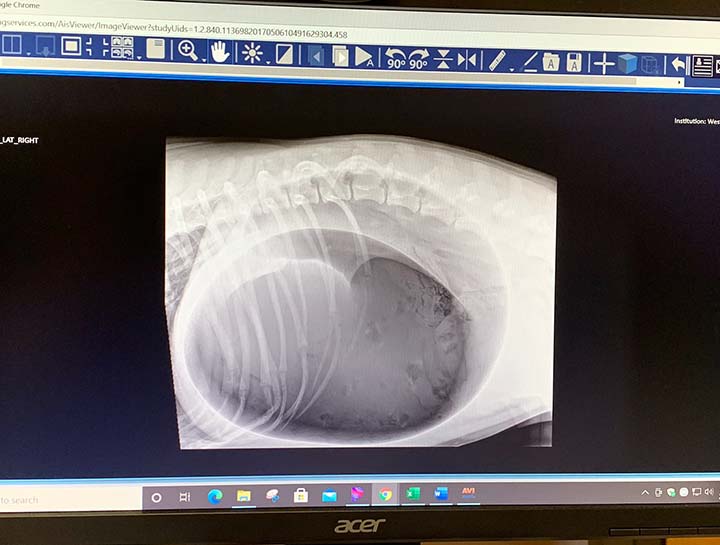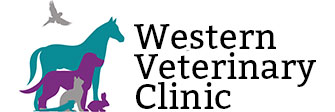Canine Bloat
A life-threatening disorder.
Gastric Dilatation and Volvulus (GDV) or Bloat is a life threatening disorder most commonly seen in large, deep-chested dogs. Small dogs and cats are occasionally affected. It is characterized by a tremendous ballooning (dilatation) of the stomach with gas and frothy material. Dilatation may be followed by twisting of the stomach (volvulus), closing both the inlet and outlet of the stomach.
This is a medical emergency that requires immediate treatment and possibly surgery to correct.
The definite cause is still unknown. The most common history is a large breed dog that eats or drinks rapidly and then exercises. In recent studies, stress was found to be a contributing factor to GDV. Sometimes only simple dilatation (bloat) occurs but in other instances the huge, gas-filled stomach twists upon itself so that both entrance and exit (cardia and pylorus) of the stomach are occluded.
What happens:
- Commonly occurs two hours after eating a large meal.
- Stomach becomes distended and dog appears “bloated”.
- Enlarged stomach causes pressure and labored breathing.
- The swollen stomach also presses on the larger blood vessels in the abdomen, resulting in shock.
- Ultimately the dog collapses.
Signs to look for:
- Restlessness
- Unproductive
- Vomiting
- Excessive Salivation
- Abdominal Pain
- Abdominal Distention (Bloat)
- Weakness or Collapse
- Comatose State
Treatment and Prevention
- Emergency Veterinary Care must be sought.
- Pressure on the stomach wall and internal organs is reduced as soon as possible. The veterinarian may first attempt to pass a stomach tube.
- Treatment for shock will begin immediately by administering intravenous fluids and medications.
- Once the patient has been stabilized, major surgery may be performed.
- Even with treatment there is a high mortality rate.
Prevention is now possible with Gastropexy
Gastropexy (surgical attachment of stomach to body wall) is the most effective means of prevention. This does not prevent dilatation (bloat) but does prevent twisting (volvulus) in the majority of cases.
This procedure is done best through a laparoscope with a small incision. Your pet would receive an anesthetic and stay one night in the hospital. Your pet needs to be kept calm and would require leash walks only for at least 3 weeks after surgery.
Other prevention tips:
- Feed smaller meals more frequently over the course of the day.
- Do not feed from a raised bowl.
- Avoid the consumption of large volumes of food and water 2 hours before and after exercise.
Please do not hesitate to contact us to discuss any concerns you have regarding this life threatening condition.

